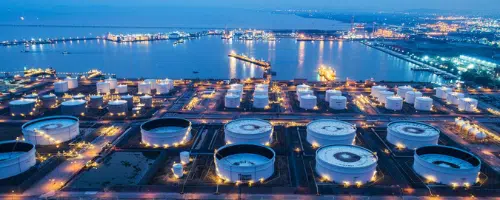How prepared is NATO’s European fuel infrastructure for war on its Eastern Flank? Fossil fuels are the backbone of modern militaries, a fact that is unlikely to change in the foreseeable future.
A protracted period of European military demobilisation following the cold war has fostered a reluctance to consider the practical prerequisites of military readiness. This reticence is now beginning to fall away under the pressure of Russian aggression and increasing American ambivalence towards their European allies. Close consideration is now being given in Brussels and European capitals as to how Europe can bolster its deterrence through a credible military capability. As a key pillar of all military operations, fuel supply will be central to these discussions.
This paper investigates the challenges to fuel logistics that NATO could face if forced into a large-scale conflict on its Eastern Flank. It finds that several core features of the European fuel supply system could emerge as serious constraints on military effectiveness:
- European NATO countries remain highly dependent on oil supply lines from unstable or unfriendly countries, raising the possibility of sudden supply constraints under conditions of war instability. Several chokepoints on European oil supply lines are vulnerable to deliberate sabotage by hostile actors.
- European oil refining capacity is concentrated some distance from NATO’s Eastern Flank, with Eastern NATO countries often dependent on imports to fill refining shortfalls during peacetime. Additionally, European refining capacity is declining under pressure from foreign competition and the green transition.
- Military fuel distribution infrastructure has not been extended to the Eastern Flank, leading to dependence on distribution methods that may not be adequate for a war scenario.
- Fuel storage in European NATO members and Eastern members in particular is low relative to both normal civilian consumption and possible military consumption. Policies on emergency storage are not well optimized for a military conflict scenario.
- Increasing decarbonisation in the civilian sector will further degrade the viability of fossil fuel infrastructure, placing increasing pressure on a military that will remain dependent on fossil fuels.
The paper makes several recommendations to address these challenges:
- Coordination should be increased at the European level to identify and address fuel supply bottlenecks.
- Collaboration between military planners and civilian oil logistics companies should be increased to address fuel supply bottlenecks.
- NATO allies should devise a clear policy on emergency oil stocks and their use during wartime.
In the short term:
- Monitor vulnerabilities along fuel supply chains and develop contingency plans for war scenarios.
- European NATO members should ensure that diminishment of oil refining and transport capacity does not impact military readiness.
- Additional fuel storage should be made available on the Eastern Flank of key military fuels.
In the medium term:
- Military infrastructure for distribution of fuel towards the Eastern Flank should be upgraded.
- Greater efforts should be made to increase the compatibility between the transition to net zero and military fuel needs.
Authors: Ron Stoop, Irina Patrahau and Ciaran Cassidy
Contributors: Lucia van Geuns and Michel Rademaker
Peer review: Energex
Cover photo: Skytanking Holding GmbH, Wikimedia Commons
The conclusions and recommendations presented in this paper are the result of independent research. Responsibility for the content rests with the authors and the authors alone. The research was made possible by a financial contribution from FETSA (Federation of European Tank Storage Associations) to the Hague Centre for Strategic Studies.







